In
the late 1950’s, during road construction in
the Euphrates Valley of south-east Turkey,
many tombs containing the remains of giants
were uncovered. At the sites the leg bones
were measured to be 120 cms (47.24 inches).
Joe Taylor, Director of Mt. Blanco Fossil
Museum, was commissioned to sculpt the human
femur. This
Antediluvian
giant stood some 14-16 ft tall
(see below).
Genesis 6:4 claims: "There were giants in
the earth in those days;" Deuteronomy 3:11
states that the bed of Og, king of Bashan,
was 9 cubits by 4 cubits (approximately 14
ft long by 6 ft wide).
Possible explanation.
The earth had more oxygen.
Long ago, even insects
may have been larger due to higher oxygen
concentrations in the atmosphere (believed
to have been about 35 percent instead of 21
percent today). This increased oxygen level
could be part of the explanation for giants,
long-lived people, and even why fossils of
giant dragonflies with 2-foot wingspans have
been found.
|
Antediluvian
Giants' bone below
|
|
|
Other
human Fossil
finds
A 19'6" human skeleton found in 1577 A.D.
under an overturned oak tree in the Canton
of Lucerne.
23-foot tall skeleton found in 1456 A.D.
beside a river in Valence, France.
A 25' 6 " skeleton found in 1613 A.D. near
the castle of Chaumont in France. This was
claimed to be a nearly complete find.
A 9' 8" skeleton was
excavated from a mound near Brewersville,
Indiana (Indianapolis News, Nov 10, 1975).
In 1833
soldiers digging at a pit for a powder
magazine in Lompock Rancho, California,
discovered a male skeleton 12 feet tall. The
skeleton was surrounded by carved shells,
stone axes,
and blocks of porphyry
covered with unintelligible symbols.
The skeleton had double rows of upper and
lower teeth.
These bones substantiated
legends by the local Piute Indians regarding
giants which they called Si-Te-Cahs.
In
Clearwater Minnesota, the skeletons of seven
giants were found in mounds. These had
receding foreheads and complete double
dentition.
|
|
|
"A miner fell through a
hole in a mine in Italy and
found this 11' 6" skeleton."
believed to been found in 1856. |
A
mound near Toledo, Ohio, held 20
skeletons, seated and facing east with
jaws and teeth "twice as large as those
of present day people," and besides each
was a large bowl with "curiously wrought
hieroglyphic figures." (Chicago Record,
Oct. 24, 1895; cited by Ron G. Dobbins,
NEARA Journal, v13, fall 1978).
Almost beyond comprehension or believability
was the find of the two separate 36-foot
human remains uncovered by Carthaginians
somewhere between 200-600 B.C.
Caius Julius Verus
Maximinus, also known as Maximinus Thrax
(235-238 A.D.) was a Roman soldier-emperor
who spent his reign on campaign. Maximinus
was born in Thrace to a Gothic father an Alanic mother in about 173 A.D.. He
was reportedly 8' feet, six inches (2.59m)
tall, and of tremendous strength.
|
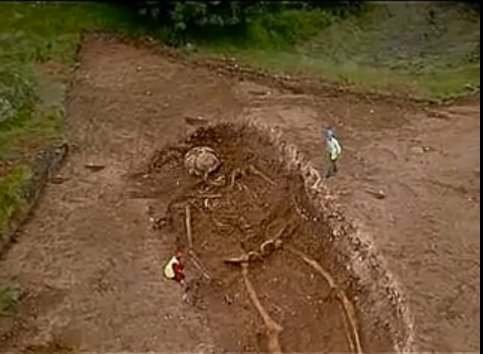
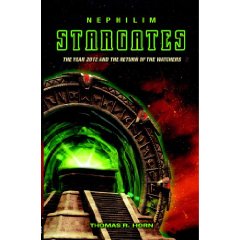
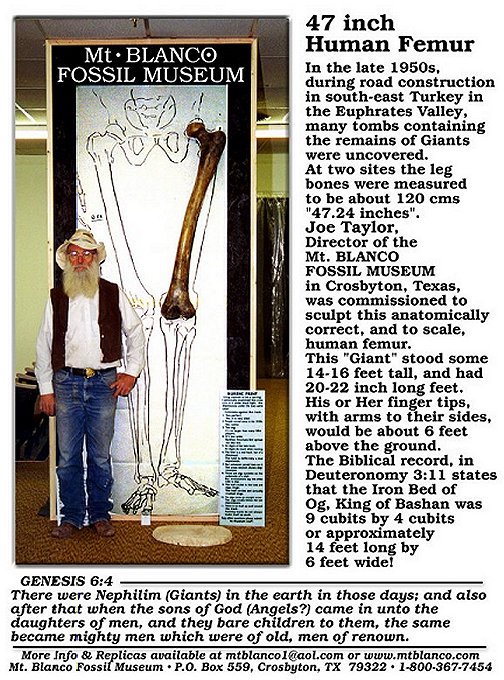
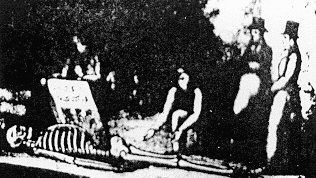
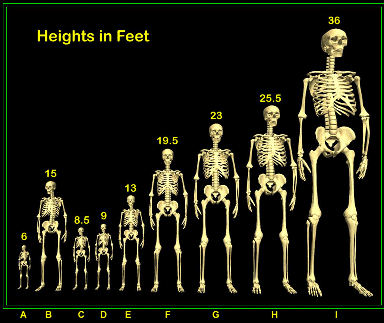
No comments:
Post a Comment
Note: Only a member of this blog may post a comment.